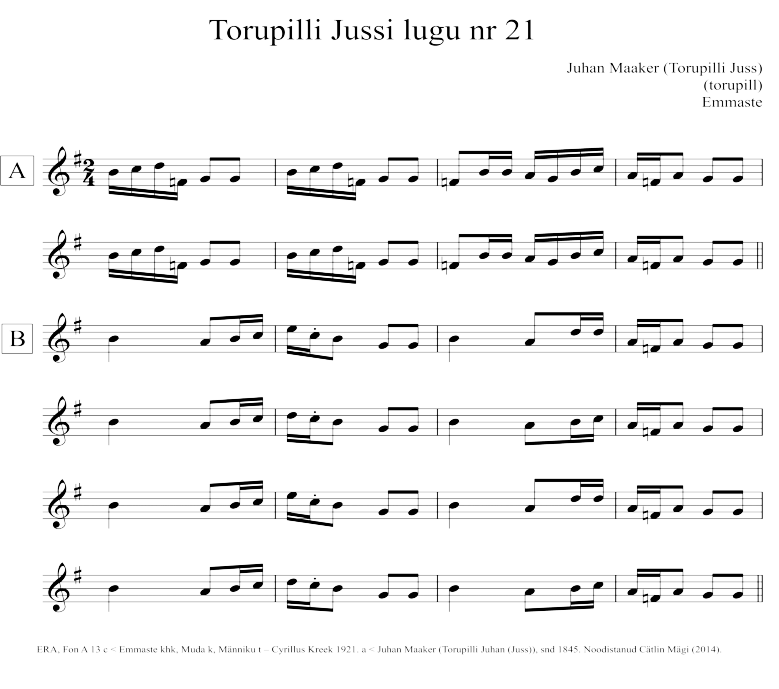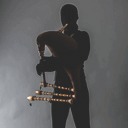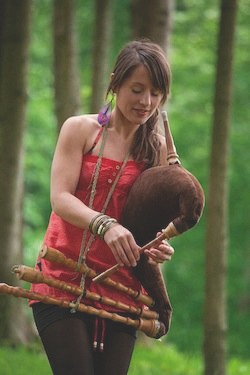The Bagpipe Society
100 Torupilli!
“100 Bagpipes” is a video blog that introduces the Estonian bagpipes and the musical opportunities they offer through active Estonians. Throughout 2015 - a year dedicated to music - 100 videos together with fascinating facts and sayings about the instrument will be published on the blog.

Estonian bagpipes used to be very popular instruments. Not a single party, especially weddings - events that were often postponed when the bagpiper could not attend - was held without the accompaniment of the bagpipes. Estonians loved the bagpipes! In the words of August Pulst, a collector of folk music, ”The listeners always left in a good mood, because they had heard the bagpipes and that was the main thing!” This was the state of things less than 100 years ago! With this video blog, I want to remind people of this honourable and powerful instrument and show that the bagpipes live again.
“For centuries, bagpipes were the most-loved instruments in Estonia. Bagpipes simply have to be present at a wedding, on a trip, at a party, during any entertainment or even communal work such as the harvest, where the bagpiper is walking to and fro…”, writes the musicologist Karl Leichter in his article “The bagpipes – Estonians’ Favourite Instrument” (Leichter, 1982: 144).
Driven by the wish to raise the awareness of the Estonian bagpipes, value the historical importance of the instrument and celebrate its vitality, I decided to carry out an experimental project ”100 Bagpipes”. Based on my 16-year-long learning and teaching experience, I came up with the idea, devised the form, and realised the project. It is the first time that such a project has been carried out in Estonia. In my opinion, the Estonian bagpipes deserve the attention and Estonians should know more about their traditions.

100 people from all walks of life – musicians, actors, teachers, athletes, TV personalities, cultural figures, etc. – get acquainted with the bagpipes. Even the President of Estonia has agreed to participate in the project. For this project, I chose people who are role models in their field and whose work and roles are followed and respected. Most of the participants played the Estonian bagpipes for the first time in their lives. All of the videos are accompanied by fascinating facts and sayings about the bagpipes. For instance, as Caitlin has mentionened in her article, the fact that the Estonian bagpipers were usually made of the stomach of a grey seal or even the skin of a lynx.
It’s possible to study the Estonian bagpipes either privately with a tutor or at the University of Tartu Viljandi Culture Academy, Estonian Academy of Music and Theatre, Tartu Heino Eller Music School, Tallinn Georg Ots Music School, Viljandi Music School, August Pulst School in Viljandi, etc.
In the old days, every bagpiper used to make his own instrument! At the moment, there is one maker of bagpipes in Estonia - Andrus Taul - who you can order an instrument from. http://www.pillimeister.torupillitalu.ee/
In the old days, the bagpipes used to be a man’s tool, but now things have gone topsy-turvy - women have taken over! My task was to demonstrate the basics of playing the bagpipes and teach the participants a simple tune in 30 minutes. My previous teaching experience in different folk music camps has told me that in 30 minutes, it is possible to teach a simple tune to someone who has never come into contact with the bagpipes. Short minute-long video clips are published on the blog. They show the participants’ skills at the beginning of the lesson as well as the end results. With this experimental project, I hope to show and prove that anyone, regardless of the age or previous experience, can create sounds with the bagpipes. It would certainly be possible to carry out a similar project to popularise other instruments as well.
The project “100 Bagpipes” has several aims:
- to raise the awareness of the Estonian bagpipes;
- to introduce the musical possibilities that the Estonian bagpipes offer;
- to give an overview of the use of the Estonian bagpipes in the past and at present;
- to provide the participants with a new and exciting experience;
- to encourage people to learn an instrument and make music
The results of the project can be witnessed by everyone through a video blog, which can be followed on a webpage ( http://100torupilli.ee ), facebook ( http://facebook.com/100torupilli ) and youtube ( http://youtube.com/100torupilli ). The blog is published in Estonian and English.
The project “100 Bagpipes” is supported by Eesti Kultuurkapital and Hasartmängu Nõukogu. The clips are filmed and edited by my brother, Siim Sillamaa. I am responsible for the idea and realisation of the project as well as the teaching.
“100 Bagpipes” has already spread around the world as I have been given feedback on social media that the blog is actively followed in Australia, Scotland, Chile and other countries.

About me:
I have been playing the Estonian bagpipes for 16 years. Before starting my studies of the bagpipes, I learned the recorder under the guidance of a private tutor for 5 years and took part in several folk music camps. At the age of 13, I saw a bagpiper I fell in love with. I also fell in love with the bagpipes and decided to master the instrument. I started my studies with a private teacher Cätlin Mägi. I have taken part in several folk music camps in Estonia and abroad. At the moment, I am involved in the bands Trad.Attack!, Ro:toro ja Paabel.
Thanks to Henrik Salum for translating the article into English.
From Chanter Summer 2015.
- Data Processing Notice (GDPR)
-
@BagpipeSociety on X (formally known as Twitter)
-
TheBagpipeSociety on Instagram
-
 BagpipeSociety on Facebook
BagpipeSociety on Facebook
Something wrong or missing from this page? Let us know!
